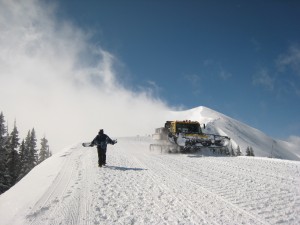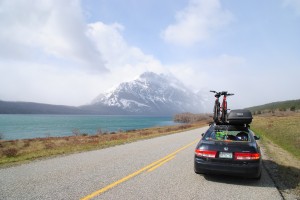I recently gave up my Alaska license because I didn’t have enough CEUs to renew. For a long time, all the licenses I held didn’t require CEUs, so it hasn’t been on my radar. Alaska is the first license I have had that has requirements, but some of the states I’ve been licensed in for years are adopting new rules for continuing ed requirements. I am based in Colorado, the continuing education tracking will start there after the 2014 renewals. I’m somewhat personally to blame for this, I have long supported CEU requirements and have advocated for states to adopt these requirements. I’ve heard people openly criticize these requirements. They claim that all continuing ed requirements do is drive people out to order crappy CEU programs that have little substance. I think this argument itself is crappy and believe that most PTs who have to purchase continuing education to maintain their licenses are going to reach for something meaningful rather than be the bottom feeders of their profession and community. In my case, I have 3 years to meet my Alaska continuing ed requirements and can renew at any point during that time. I have already order and started a HIGH QUALITY home study course from APTA’s Ortho Section that I previously intended to get but have been procrastinating for almost a year now. So, to you naysayers of continuing ed requirements, here’s one PT that was forced into getting high quality education by the very requirements you dismiss. And to those who believe that your years of experience are a superior substitute for structured professional development, you are wrong. I may not have been practicing for 20-30 years, but I have been practicing long enough to see huge progressions in practice – the way we assess and treat low back pain, the way technology has drastically changed total joint replacements, the proliferation of dry needling and manipulation – the list goes on… Each year that goes by, I realize how much more there is to learn, if you don’t see this, you’ve already fallen behind. People have been criticizing con-ed repeatedly in public internet discussions (I’m looking at you PT Twitterverse) and finally I get to candidly respond: You don’t know what you don’t know, and by fighting continuing ed, you are making yourself sound self-righteous and crotchety. The majority of your peers will consistently choose high quality education over the path of least resistance. Stop talking down on continuing ed requirements, they are a good thing for our profession.
Whew, sorry about that. I guess that’s been building up inside for a while. I hope smoke is coming out your ears from reading that last paragraph (my hair actually burst into flames). OK! Back to the story!

On the beach? Best place in the world to read a journal or home study course for CEUs. Continuing ed has never been better.
It’s not that I haven’t been learning. I read JOSPT every month, I read other articles when I’m not sure of something in the clinic, I go to coworkers’ places to knowledge-mooch when they have ordered a webinar. Travel PTs are ALWAYS learning. Different clinics have different techniques, different patient populations, and all kinds of people to learn something from. As a traveler you may work at one hospital that has the latest and greatest in surgical techniques and then you’ll work in a private practice that runs a manual therapy fellowship. A traveler is surrounded by casual learning opportunities, but we are not surrounded by funding for formal instruction – that is our challenge, our weakness. Unless you travel with one company for more than a couple assignments, you are unlikely to see more than a couple hundred bucks for continuing ed courses. But, there are opportunities out there – great opportunities! Great courses! And many of them are convenient for the traveler.
I have written in the past (Traveling doesn’t have to mean professional sacrifice 4/11/2011) about the opportunities for travelers to take larger programs like residencies and certificate programs. These are a big commitment, but force you to stay on path of continued education. Many can be completed through a series of weekend courses offered all over the country, so you can access your next stage of learning where ever you go. As I eluded to earlier, dry needling is a technique that has gained popularity and has some very high-level and quality learning opportunities. It wasn’t on my list in 2011, but it should be now!
There are smaller things a traveler can do for continuing ed credits throughout the year. Many reputable journals have read-for-credit programs where you can hop online for tests to demonstrate your knowledge on their articles. Credits are small, but add up over a year or two. The Independent Study Course I recently ordered from the Ortho Section, Applications of Regenerative Medicine to Orthopaedic Physical Therapy, has me fascinated in the first portion of a 6-part home-learning program. It is very high quality and written by THE experts. I will take a test at the end and get 30 hours of continuing ed – 30 hours! I have a co-worker who is finishing up a Foot and Ankle course this way. It’s a great means for people on the go or far away from a big city to get high-quality learning.
There are ways to get continuing ed without a huge hassle and without resorting to lousy courses that blindly dole out CEU’s for entry-level knowledge. Plan ahead, learn your states’ requirements ahead of time, and you’ll be fine. I’m well on my way to being able to re-instate that Alaska license should an opportunity arise.















